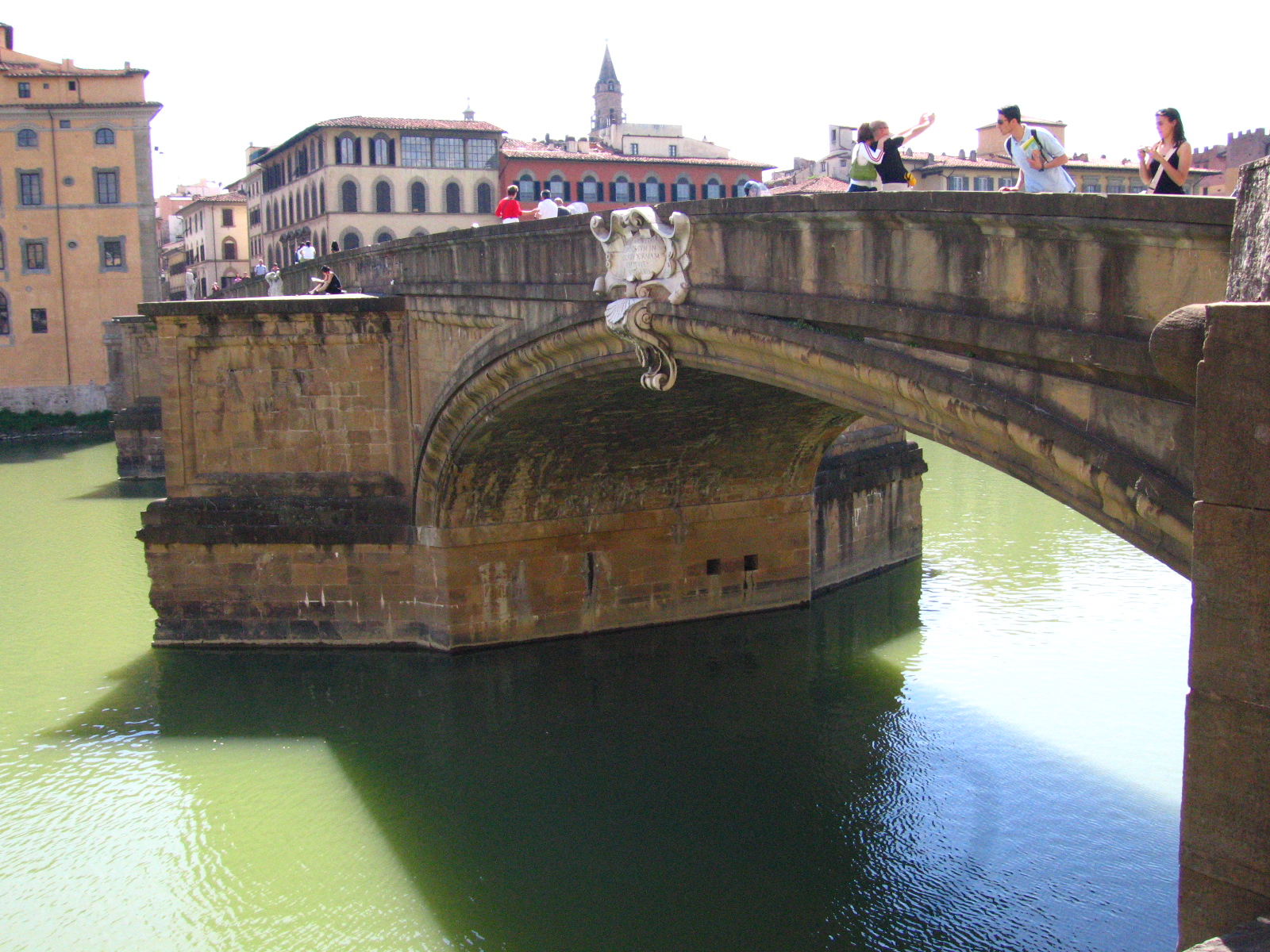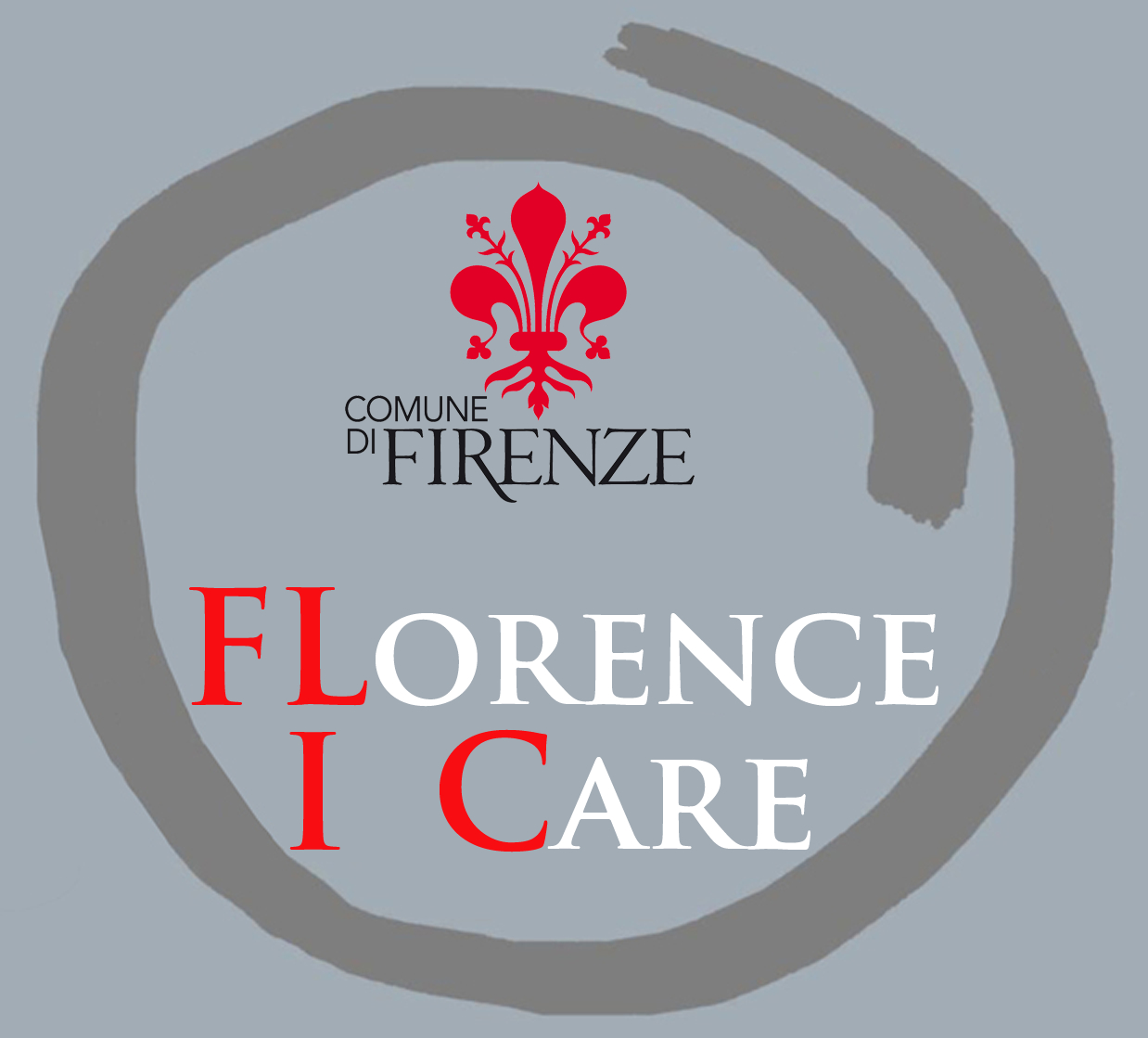Ponte S. Trinita
Intervento per videosorveglianza/ Video surveillance intervention

La glauca luna lista l’orizzonte
E scopre i campi nella notte occulti
E il fiume errante. In suono di singulti
L’onda si rompe al solitario ponte.
Giovanni Pascoli
Tra Ponte Vecchio e Ponte alla Carraia prende il nome dalla vicina chiesa della Santa Trinità ed è uno dei ponti più belli di tutta Italia e fra i più eleganti d’Europa. La bellezza e l’eleganza del ponte è dovuta oltre che alla linea d’archi, anche agli acuti piloni di sostegno, che evitano il rimanere di tronchi impigliati durante le piene, ai cartigli bianchi sugli archi ed alle quattro statue allegoriche che ne decorano gli angoli e che raffigurano le quattro stagioni: collocate nel 1608, due sono opera dello scultore seicentesco Pietro Francavilla (Primavera e Inverno) e due di Giovanni Caccini (Estate e Autunno). Se osservate dal fiume, le quattro statue, sembrano seguire con lo sguardo il navigante.
Situated between Ponte Vecchio and Ponte alla Carraia, it is named after the nearby church of Santa Trinità ( Holy Trinity) and it is one of the most beautiful bridges in Italy and among the most elegant in Europe. The beauty and elegance of the bridge is due not only to the line of arches, but also to the acute supporting pillars which avoid the logs to be caught during floods, the white cartouches on the arches and the four allegorical statues that decorate the corners, depicting the four seasons. They were placed in 1608, two are by Pietro Francavilla, a 17th century sculptor (Spring and Winter) and two by Giovanni Caccini (Summer and Autumn). If you take a look from the river, the four statues, seem to follow the sailor with their eyes.
Valore dell’intervento/Value of intervention: € 150.000,00
Durata dei lavori/Time line: 120 giorni/days
Tipologia dell’intervento: a causa degli atti vandalici a cui il ponte è costantemente sottoposto, si rende necessario realizzare un sistema di videosorveglianza per dissuadere i vandali da compiere le continue azioni che comportano un elevato aspetto di degrado del ponte stesso. Dovrà essere progettato e realizzato un sistema di videosorveglianza, che collegato con l’impianto di allarme di presenza sulle pile del ponte stesso, dissuada i vandali ed i turisti dall’accedere a tale zona del ponte.
Type of intervention: because of vandalism to which the bridge is constantly subjected, it is necessary to implement a video surveillance system to deter vandals from the continuing actions which produce a high aspect of degradation of the bridge itself. A video surveillance system must be designed and implemented, which will be connected with the alarm system on the bridge piers, to discourage vandals and tourists from accessing the bridge area.
Attrattività: elevatissima. Il Ponte si trova nella parte della città più visitata dai turisti e frequentata dai fiorentini; oltre a essere il ponte da cui si fotografa l’adiacente Ponte Vecchio, rappresenta l’accesso al centro storico da via Maggio verso via Tornabuoni, “salotto buono” della città.
Attractiveness: Very high. The Bridge is located in the part of the city most visited by tourists and by the Florentines. It is not only the bridge from which you can take a photo of the adjacent Ponte Vecchio, but it is also the access to the city centre from Via Maggio towards Via Tornabuoni, the most important fashion brands street in the city.
Notizie storico-artistiche: all’origine era un ponte di legno che univa Via Tornabuoni con l’altra riva dell’Arno. Crolla nel 1259 sotto il peso della folla che assisteva ad uno spettacolo sull’Arno, e a rimetterlo in piedi saranno i monaci architetti Giovanni e Ristoro. Venne riedificato in pietra, ma cedette sotto la spinta della grande piena del 1333 che risparmiò solo Ponte alle Grazie. La successiva riedificazione fu completata nel 1415. Una nuova alluvione, nel 1557, spazzò via il ponte, che però permise la costruzione della struttura odierna. Cosimo I de’ Medici incaricò Bartolomeo Ammannati di realizzare un nuovo ponte, più resistente e più bello, che fosse all’altezza dell’importanza di Via Tornabuoni e di Via Maggio, dove si erano stabilite molte famiglie nobili della corte medicea. I lavori iniziarono nel 1567. Dopo tre anni il ponte era completato, e colpì immediatamente per la sua eleganza e per il nuovo disegno delle arcate. Il ponte fu distrutto dai tedeschi in ritirata il 4 agosto del 1944 e fu in seguito ricostruito dov’era e com’era inaugurandolo il 16 maggio 1958. In particolare furono anche ripescate dal fiume le quattro statue decorative, ma per ritrovare la testa della Primavera si dovette aspettare fino al 1961.
Historical and artistic information: It was originally a wooden bridge that connected Via Tornabuoni to the other bank of the river Arno. It fell down in 1259 under the weight of the crowd that was watching a show on the Arno, and the monks architects Giovanni and Ristoro built it up again. It was rebuilt in stone, but it broke down under the pressure of the great flood in1333 that spared only Ponte alle Grazie. The subsequent reconstruction was completed in 1415. In 1557 another flood swept away the bridge, but allowed the construction of the present structure.
Cosimo I de’ Medici commissioned Bartolomeo Ammannati to build a new bridge, more durable and more beautiful, that was up to the importance of Via Tornabuoni and Via Maggio, where many noble families of the Medici court had settled down. Works began in 1567. Three years later the bridge was completed, and immediately struck for its elegance and for the new design of the arches. The bridge was destroyed by the retreating Germans on August 4th 1944 and was later rebuilt where it was and like it was on 16th May 1958. The four decorative statues were fished out, but the head of Spring was not found until 1961.
